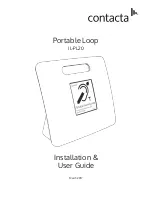
15
Dynamic microphones are affected as much as phantom powered units.
We provide a continuously variable impedance control to allow you to fine-tune the voicing, finding
the perfect interaction between microphone and pre-amp.
Start by setting the centering the Input Impedance knob. This provides a 600-Ohm load.
Lower impedance loads will reject more noise picked up by cabling, and dampen microphone reso-
nance. Higher impedance settings provide a more “open” sound. Lower impedances tend to focus the
sound more.
Obtaining the perfect digital level setting
The Digital Level meter indicates both peak and average levels present at the A/D converter. The 0dB
LED indicates that there is less than 1dB of headroom before clipping. The highest peak level
reached is held for 1 second by a single LED and the average level is indicated by the remaining
LEDs, lit in series.
It is recommended you start with the Digital Level control centered. Adjust the input gain and +20dB
switch such that the digital meter holds peaks at –3dB and occasionally hits the red 0dB LED. This
setting will provide the best dynamic range AND the tube will saturate before the A/D clips (on heavy
overloads).
If you want more tube headroom, set the Digital Level control fully clockwise and reduce the Input
Gain control.
If you need to compress the input signal before it is converted to a digital signal, use the rear panel
Insert Jacks. The insert point is located between the tube output and the Digital Level control. This
allows insertion of a dynamics processor with the ability to tweak the A/D input sensitivity from the
DIGITAL MPA II front panel.
1
1
If you wish to operate the Digital MPA II in the "High" plate voltage mode, reduce the Output knob by 5dB to compen-
sate for the difference in tube headroom/gain. You can also use the Digital meter to monitor the tube headroom in this
Plate voltage mode by setting the Digital Level control to "0" dB.







































